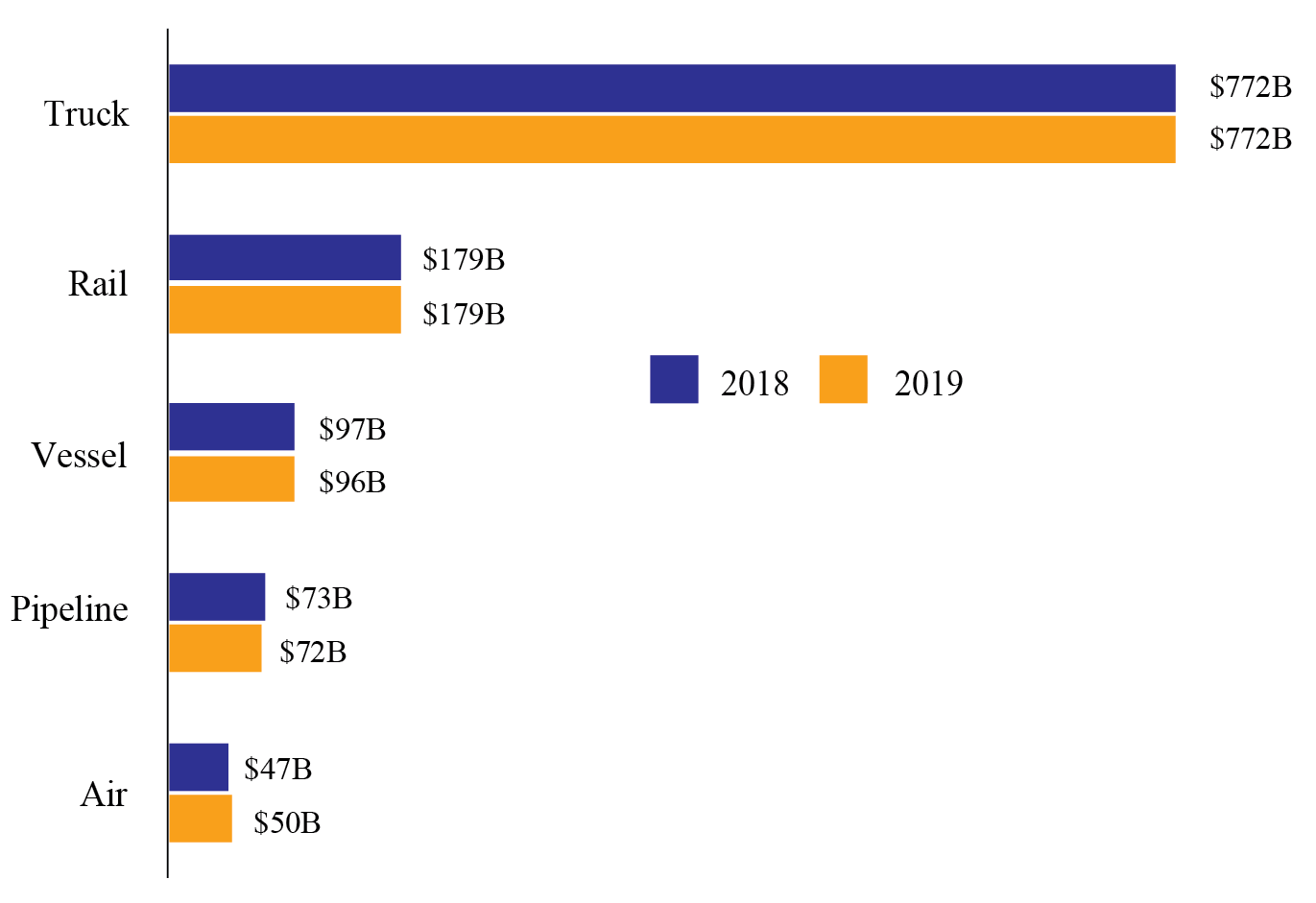NAFTA truck freight remained stagnant in 2019
The Bureau of Transportation Statistics has released annual North American transborder freight numbers for 2019. North American Free Trade Agreement (NAFTA) freight did not budge much compared with 2018.
Last year, $1.2 trillion in freight crossed the southern and northern borders, a modest decrease of 0.2% compared with the previous year. Canadian freight was valued at $612 billion, a 0.8% drop. However, Mexican freight increased by 0.5% to $614.5 billion. In 2018, NAFTA freight increased by 7%.
Of the five transportation modes, three experienced an overall decline, one (air) saw an increase, and trucking freight remained stagnant. Trucking freight experienced a 0.0% change at $772 billion. Meanwhile, air freight increased by nearly 6% at $50 billion. Pipeline freight experienced the largest annual decline at 1.5%.

Trucks accounted for 63% of all NAFTA freight in 2019.
That share drops to 56% for freight coming from the northern border. However, trucking is responsible for 70% of the freight at the southern border. Canadian truck freight dropped by 1.5%, but Mexican truck freight increased by 1.2%.
Laredo, Texas, was the busiest truck border port, accounting for $182 billion of NAFTA freight. Behind Laredo was Detroit ($106 billion) and El Paso ($65 billion). Nearly half of NAFTA truck freight was hauled through those three borders.
Overall, Texas carried the most NAFTA truck freight by state with nearly a quarter of the freight, followed by California with 11% and Michigan with 9%.









